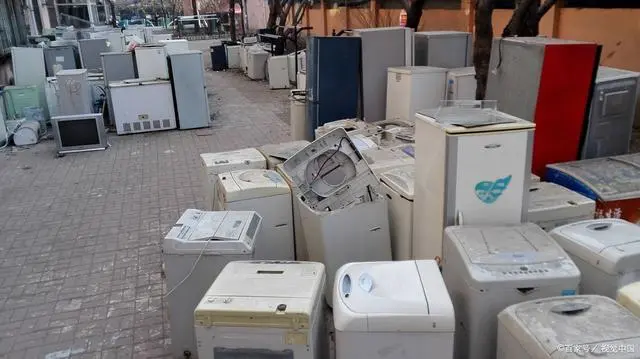
Waste household appliances belong to solid waste, but they are different from other solid waste, such as construction waste, household appliance waste, industrial waste, etc. The material composition of waste household appliances is relatively complex and diverse, consisting of various metals, precious metals, plastics, glass, organic glass, and various chemical materials. From the perspective of resources and environment, waste household appliances have two characteristics: environmental pollution and resource regeneration. Recycling them can save metal resources and prevent environmental pollution.
Waste household appliances contain various chemical materials, most of which are harmful to human health and have a polluting and destructive effect on the environment. For example, heavy metals in waste circuit boards can cause serious pollution to water quality and soil. The refrigerants and foaming agents used in the manufacturing of refrigerators and air conditioners are substances that destroy the ozone layer, and some lamps and relays contain mercury. If waste household appliances cannot be properly recycled and disposed of, they will cause great pollution to the environment. Toxic and harmful substances enter the soil and groundwater, and then enter the essential food for human life through the animal and plant food chain, causing serious harm to humans.
On the other hand, household appliances use a large amount of raw materials such as steel, non-ferrous metals, plastics, rubber, glass, etc. in the production and manufacturing process, most of which are recyclable and renewable resources. With the rapid development of the economy and the increasing speed of updating various electronic products, the consumption of various energy resources and precious metals used in the production of electronic products is increasing, and various primary mineral deposits are also decreasing. Therefore, it is also beneficial for the country and the people to do a good job in recycling and utilizing waste appliances and reducing the mining of mineral deposits. Waste electrical appliances contain a considerable amount of precious metals such as steel, silver, copper, tin, platinum, palladium, etc. The US Environmental Protection Agency has confirmed that replacing new steel obtained through mining, transportation, and smelting with scrap steel recovered from household appliances can reduce mining waste by 97%, air pollution by 86%, and water pollution by 76%; Reduce water consumption by 40%, save 90% of raw materials, 74% of energy, and the performance of steel materials produced by waste appliances is basically the same as that of new steel. According to statistics, some household appliances in the United States have been recycled, providing recycled steel.

 Recycling, dismantling, and reuse of waste household appliances-Information-Jiangxi Mingxin
Recycling, dismantling, and reuse of waste household appliances-Information-Jiangxi Mingxin